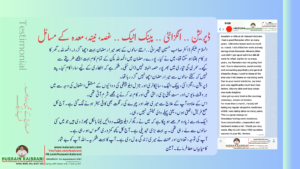Adenoids (or pharyngeal tonsils, or nasopharyngeal tonsils) are a mass of lymphoid tissue situated at the very back of the nose, in the roof of the nasopharynx, where the nose blends into the mouth.
Normally, in children, they make a soft mound in the roof and posterior wall of the nasopharynx, just above and behind the uvula.
Function of Adenoids
Adenoids are part of the immune system. Like all lymph tissue, they trap infectious agents like viruses and bacteria, and they produce antibodies.
Since the adenoids are located at the back of the nasal airway, they provide defense against inhaled substances.
This function decreases with age as the adenoids shrink. Because adenoids do ordinarily shrink by late childhood, the problems caused by enlarged adenoids rarely occur in adults.
It is important to remember that even though the pharyngeal tonsil is usually referred to in the plural sense, i.e. adenoids, as in this article, in reality there is only one adenoid tonsil.
Pathology
Enlarged adenoids, or adenoid hypertrophy, can become nearly the size of a ping pong ball and completely block airflow through the nasal passages.
Even if enlarged adenoids are not substantial enough to physically block the back of the nose, they can obstruct airflow enough so that breathing through the nose requires an uncomfortable amount of work, and inhalation occurs instead through an open mouth.
Adenoids can also obstruct the nasal airway enough to affect the voice without actually stopping nasal airflow altogether.
Adenoid Facies
Enlargement of adenoids, especially in children, causes an atypical appearance of the face, often referred to as adenoid facies.
Adenoid facies have a rather colorful history. In “Cymen and Iphigenia”, John Dryden draws, perhaps unconsciously, a most vivid and accurate pen picture of the adenoid face:
“The fool of nature stood with stupid eyes
And gaping mouth which testified surprise.”[1]
George Catlin in his humorous and instructive book, The Breath of Life, published in 1862, illustrates adenoid faces in many engravings and advocates nose-breathing.[1]
Removal of the adenoids
Surgical removal of the adenoids is a procedure called adenoidectomy.
Adenoids may be removed if they become infected, causing symptoms such as excessive mucus production.
Carried out through the mouth under a general anaesthetic (or less commonly a topical), adenoidectomy involves the adenoids being curetted, cauterised, lasered, or otherwise ablated
Histology
Adenoids, unlike other types of tonsils, have pseudostratified columnar ciliated epithelium.[2]
They also differ from the other tonsil types by lacking crypts. The adenoids are often removed along with the tonsils. This can cause a very sore throat for about a week and rather unpleasant breath. Most people’s adenoids are not even in use after a person’s third year, but if they cause problems they must be taken out or they may otherwise shrink.
Homeopathy Treatment for Adenoids
Keywords: homeopathy, homeopathic, treatment, cure, remedy, remedies, medicine
Homeopathy treats the person as a whole. It means that homeopathic treatment focuses on the patient as a person, as well as his pathological condition. The homeopathic medicines are selected after a full individualizing examination and case-analysis, which includes the medical history of the patient, physical and mental constitution, family history, presenting symptoms, underlying pathology, possible causative factors etc. A miasmatic tendency (predisposition/susceptibility) is also often taken into account for the treatment of chronic conditions. A homeopathy doctor tries to treat more than just the presenting symptoms. The focus is usually on what caused the disease condition? Why ‘this patient’ is sick ‘this way’. The disease diagnosis is important but in homeopathy, the cause of disease is not just probed to the level of bacteria and viruses. Other factors like mental, emotional and physical stress that could predispose a person to illness are also looked for. No a days, even modern medicine also considers a large number of diseases as psychosomatic. The correct homeopathy remedy tries to correct this disease predisposition. The focus is not on curing the disease but to cure the person who is sick, to restore the health. If a disease pathology is not very advanced, homeopathy remedies do give a hope for cure but even in incurable cases, the quality of life can be greatly improved with homeopathic medicines.
The homeopathic remedies (medicines) given below indicate the therapeutic affinity but this is not a complete and definite guide to the homeopathy treatment of this condition. The symptoms listed against each homeopathic remedy may not be directly related to this disease because in homeopathy general symptoms and constitutional indications are also taken into account for selecting a remedy. To study any of the following remedies in more detail, please visit the Materia Medica section at www.kaisrani.com.
None of these medicines should be taken without professional advice and guidance.
Homeopathy Remedies for Adenoids :
Agra., bar-c., bar-m., calc., calc-f., calc-i., calc-p., carc., iod., kali-s., lob-s., merc., mez., phyt., psor., sang-n., sulph., thuj., tub.
{googleAds}{include_content_item 462}{/googleAds}
References
- ^ a b Wylie, A, (1927). “Rhinology and laryngology in literature and Folk-Lore”. The Journal of Laryngology & Otology 42 (2): 81-87.
- ^ Histology at KUMC lymphoid-lymph06





